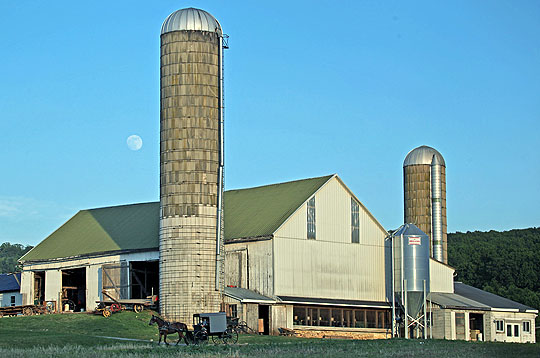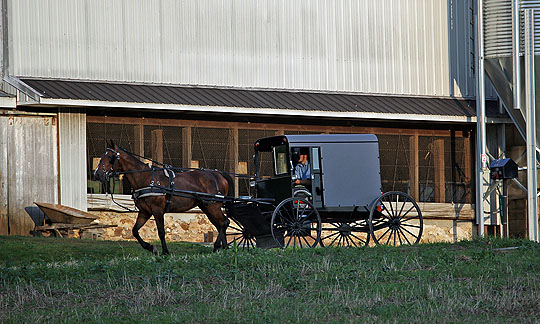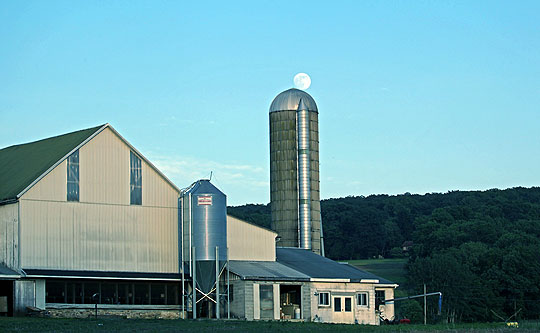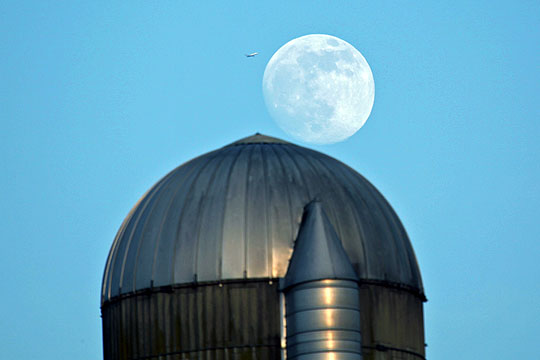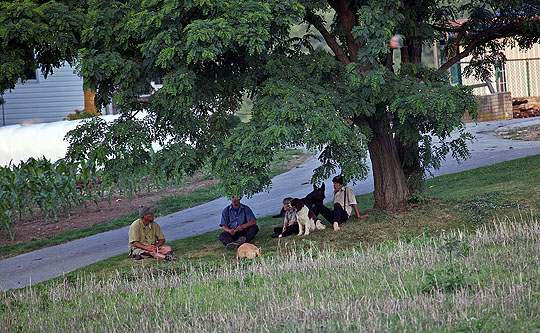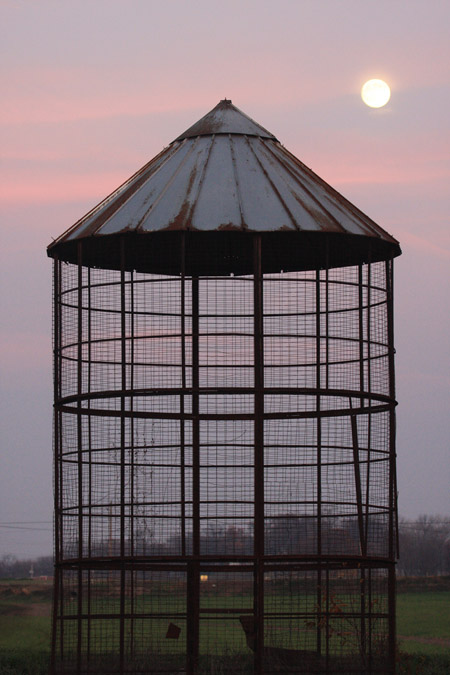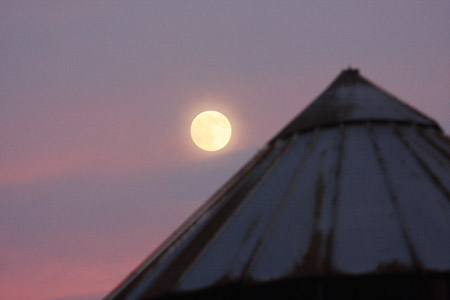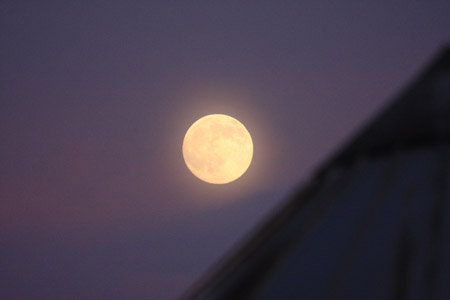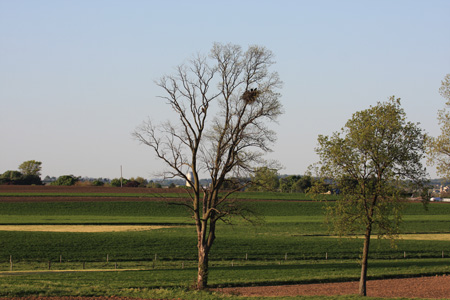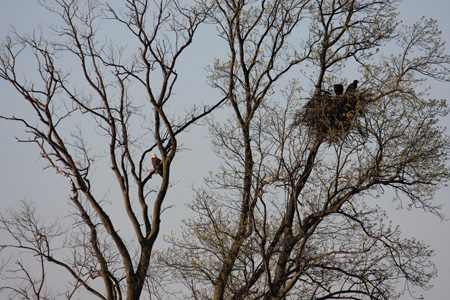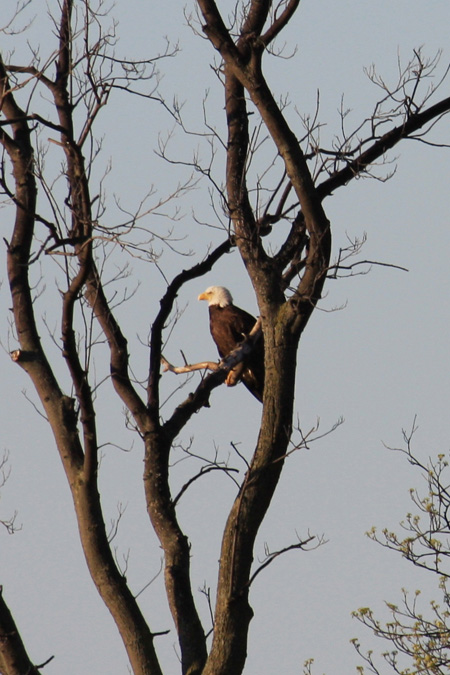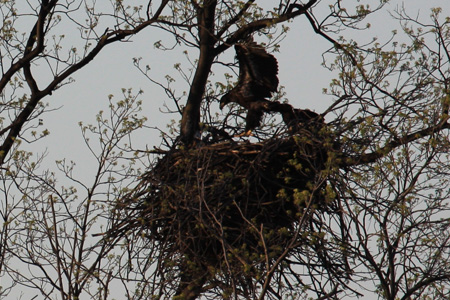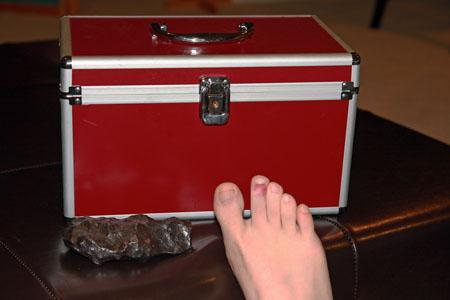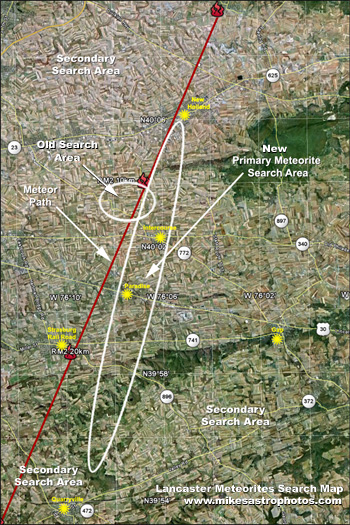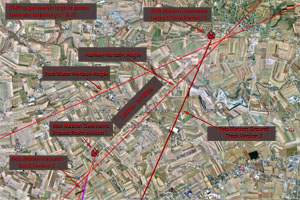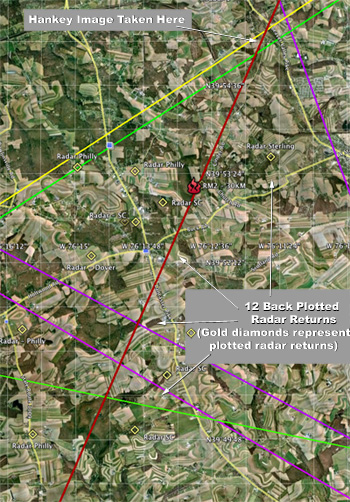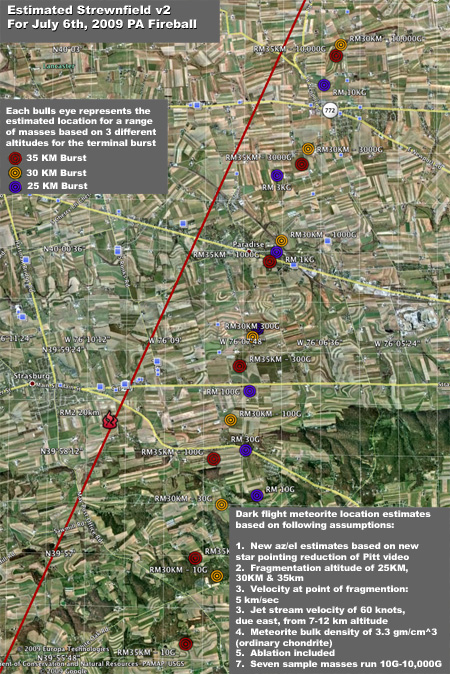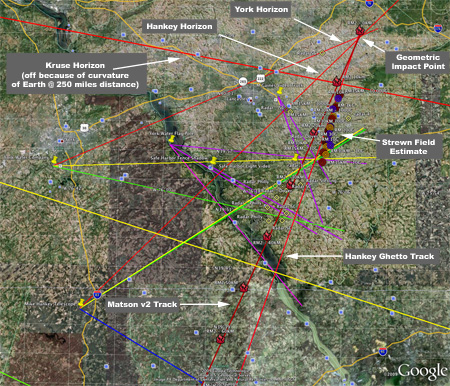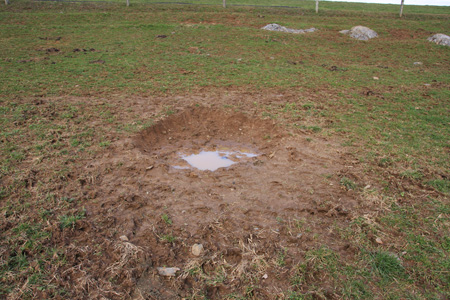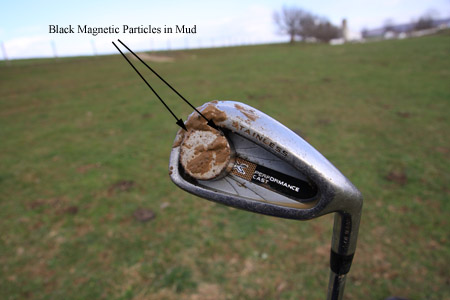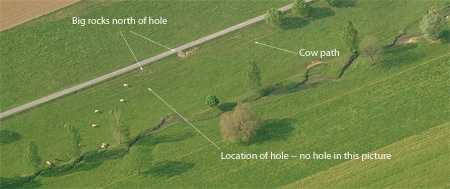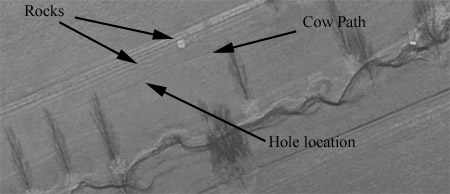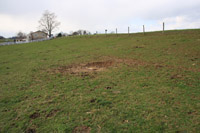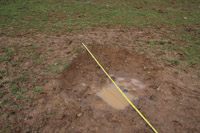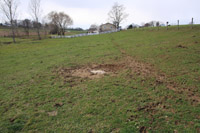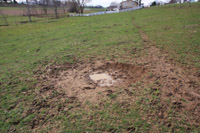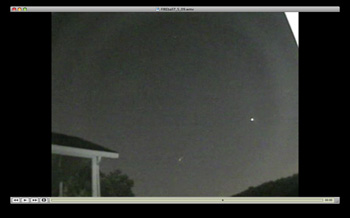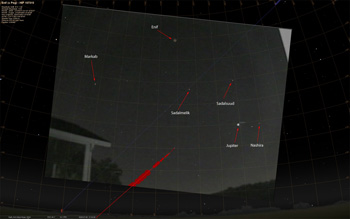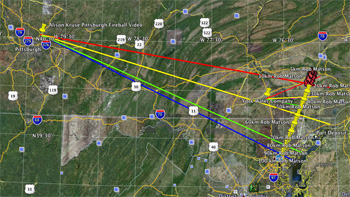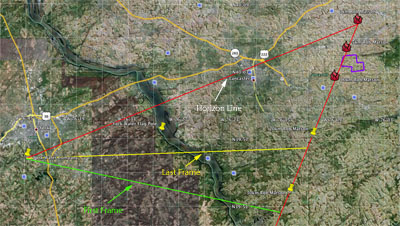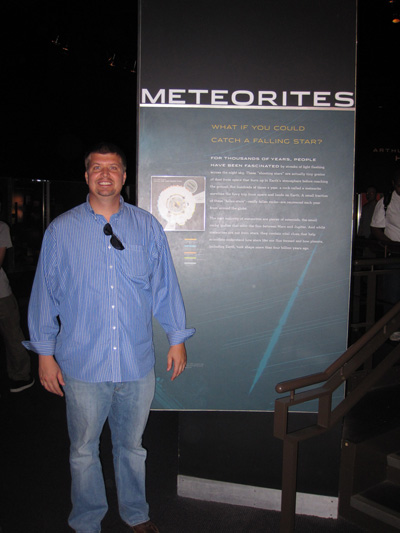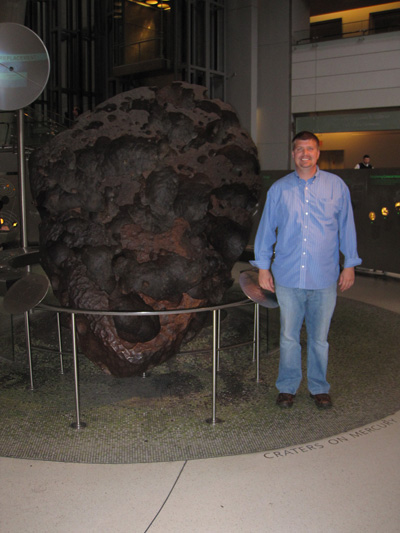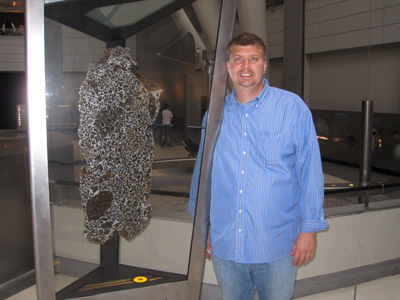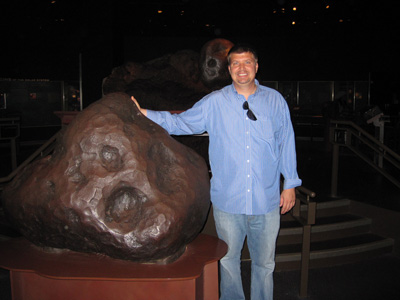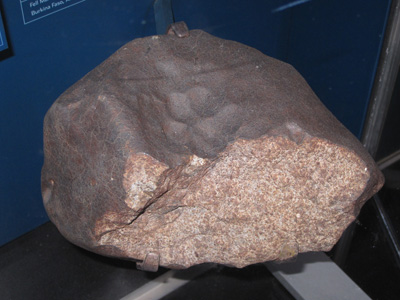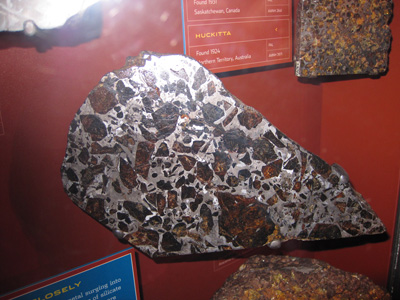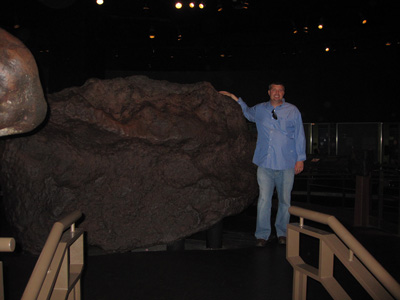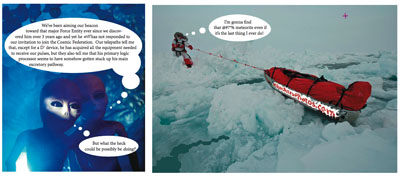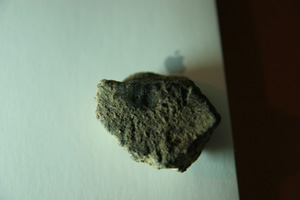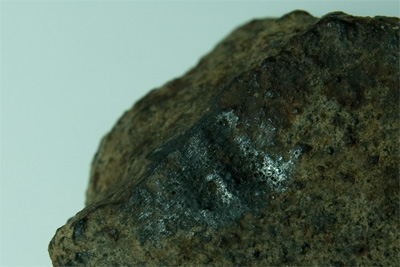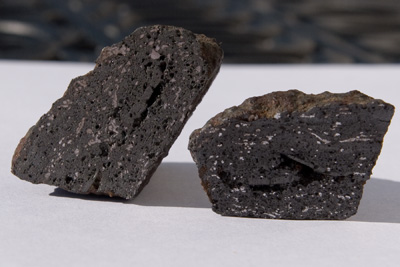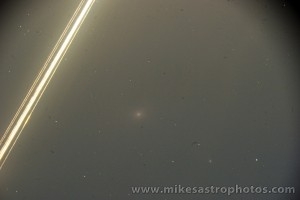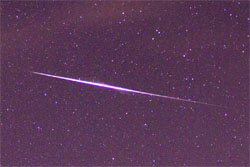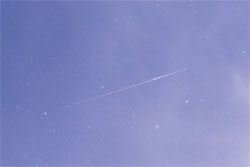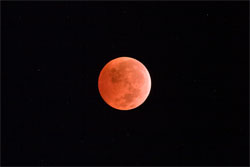Mason Dixon Meteor
Super Moon in Lancaster PA
by Mike Hankey, under Mason Dixon Meteor
I had some business in Lancaster last night and caught the almost super moon rising just before dusk. Sunday night will be the full super moon and one day of the year when the Moon is closest to the Earth.
The hunt continues…
Official Page of The Mason Dixon Meteor
by Mike Hankey, under Mason Dixon Meteor
I have compiled all information on the Mason Dixon Meteor hunt onto a specific page. For information about the PA Fireball of July 6th, 2009 please visit:
The Official Page of The Mason Dixon Meteor
Beaver Moon in Lancaster
by Mike Hankey, under Lunar, Mason Dixon Meteor
The November full moon is known in the farmers almanac as the Beaver Moon. This was a signal to let people know to set their beaver traps before the creeks froze. The Full Beaver Moon also comes from the fact that beavers are actively preparing for winter at this time of year.
I caught some nice pictures of the Beaver Moon while meteorite hunting in Lancaster PA.
Reddit, Am I doing this right?
American Bald Eagle’s Nest
by Mike Hankey, under Mason Dixon Meteor
I came across this Bald Eagle’s nest while hunting for meteorites in Lancaster, PA.
As you can see there are two young eagles in the nest along with a momma (i think) keeping watch.
Here’s a close up of one of the parents. I few days prior I saw two adults, but when I took this picture there was only one adult at home.
While I was watching and photographing from about 150 yards away, one of the baby eagles started to fly (or at least tried to).
I captured about 100 pictures of this young eagle jumping all over its nest, trying its hardest to make flight. Best it could do was about a foot off the crest of the nest. I sequenced the frames and made a short time lapse video of this eagle learning to fly.
I came back to the nest about a week later and no one was home, so I guess the young ones figured it out.
Meteoritoe
by Mike Hankey, under Mason Dixon Meteor
I was getting ready to go meteorite hunting today and I just had to put my boots on. I had two rare earth magnets and put one in each back pocket so they wouldn’t stick together. I have this nice felt lined red box with a handle and a metal clasp that I carry some of my meteorites in so I can show them to landowners and teach them what to look for. I grabbed the red box and headed for the garage. As I turned around the doorway one of the magnets in my pocket stuck to the clasp on the box and as I moved, the box opened and a 1kg Canon Diablo fell on my toe. It hurt like $%!+, but I still went out hunting. Would this be considered an impact event?
Why Meteorites?
by Mike Hankey, under Mason Dixon Meteor
Sometimes people have a hard time understanding why I’m so obsessed with finding the Mason Dixon Meteor. Its hard to explain really, but the other day someone on the meteorite list posted this quote from 1964 made by Doctors who were part of the United Nations Educational, Scientific and Cultural Organization (UNESCO) in Paris.
Dr.Hey, Dr.Mason, Prof. Orcel, Prof. Sztrokay and Dr.Fournier D’Albe wrote:
“Since meteorites are the only specimens we receive of material from outside
our Earth, it is essential for the progress of science that every effort be
made to collect these specimens and make them available for investigation.
Unesco, through its Working Group on Meteorites, is trying to interest
people everywhere in the observation and recovery of meteorites.”
Those are the first sentences of a circular, they proposed, which….
“It is recommended that the circular”…”be sent to the institution
responsible for meteorites in each country, with the suggestion that copies
of it be given wide circulations in schools, post offices, police stations
and other public services. It is desirable that the press and radio be
encouraged to arouse public interest in this subject.”
Any questions?
Mason Dixon Update – New Rob Matson Trajectory
by Mike Hankey, under Mason Dixon Meteor
I spent 6 weeks back in September and October regathering and re-calibrating all of the recorded evidence from the meteor fall. From the beginning Rob had told me the model he created was only as good as the input data used, minor flaws in the readings from the pictures could result in miles of distance on the ground. After extensive searching in the original drop zones proved unsuccessful I felt a burning desire to return to the original data, improve it and possibly obtain more.
There were two crucial pieces that had been missing from the original data set. The first was a useful reading from the York Water video. The fish eye lens and lack of reference stars in this video created a large margin of error. We were able to improve the York video by filming the full moon over two nights and overlaying the moons position with the meteor footage. After doing this we found more than 3 frames of meteor footage that lined up almost perfectly with the location of the moon — giving us a very strong reading from the York Video.
The second area we could improve on was the Alison Kruse fireball video. While it was a very good video to begin with, the only copy we had ever studied was the youtube version which was greatly distorted. I worked with Alison to obtain the raw video footage and this revealed two new stars in the image that helped us improve the altitude and azimuth readings from Alison’s video. During this time I was also able to recover 5 new videos from York, one of which had incredible shadows cast from a large building and a flag pole.
After gathering, calibrating and reviewing all of the data I contacted Rob and asked him if he could improve his original model with the new data. He agreed, re-analyzed the new video footage and calibration photos and then recomputed the trajectory model. The data resulted in a shift of the end point of the trajectory line by 5 kilometers (3.2 miles). Now all things considered this is a very minor improvement considering the size of the Earth, but when you are on the ground walking around looking for tiny rocks this is a HUGE improvement. More importantly the new calibration data resulted in a shift of the previous altitude for my picture and thus the estimated terminal burst altitude from 10KM to 27KM. This new revelation would change the shape and location of the estimated strewnfield significantly.
Lots of time by Rob and others was spent pouring over the NEXRAD radar data from that night, to date nothing obvious was visible. However Rob continued to research the radar data and was able to find 12 different returns from 4 different radar stations that plotted along the track. These returns registered 5-15 minutes after the fall and were all east of the ground track. Taking into consideration a 60km jet stream wind speed and time, Rob plotted all 12 of these returns back to a centralized spot along the track of the meteor. The radar returns Rob believes are left over dust from the terminal burst (when the meteor explodes) that had blown east in the minutes that followed the fall. The crazy thing is, all of these returns took place on the track right before the spot where my picture was taken. All along most people said my picture was an image of a bolide right after fragmentation (some people insist its a plane, despite all of the evidence against this theory). After realizing the radar find, Rob said “the radar data is the nail in the coffin on your picture actually being a bolide argument.”
Rob didn’t stop after improving the 3D track and finding over a dozen radar returns. He went on to gather the jet stream wind speeds from that night and also the surface wind speeds. Using the jet stream wind speeds he then calculated the dark flight for meteorites of various masses ranging from 10g to 10kg .
He ran the dark flight model using 35km, 30km and 25km altitudes. One of the most important keys to finding the location of the meteorites is knowing when the burst happened and when dark flight began. The computer models use the wind speeds and gravity calculations starting at this burst point. While the burst point we have now is not exact it is very close and substantiated by radar data, the york video and my picture.
The previous terminus point we had been using was at 10km altitude. This caused the estimated strewn field map to be narrow in the north south direction, but wider in the east west direction. This new discovery of a 30-35km burst point made a significant impact on the estimated strewn field map shifting the primary search location up to 10 miles! Instead of a small circular search area we now have a long narrow elliptical one (1 mile wide and 8 miles long).
How to track a fireball using Google Earth
Now while I was re-collecting the data and working with Rob to refine the trajectory I learned a lot about how to track a fireball. There is a 3D computational programmatic method based on trigonometry and aerospace engineering concepts (what Rob did using a Fortran program he wrote) and there is a ghetto fabulous, cocktail napkin plotting method that can be easily accomplished using Google Earth. Both of these methods require sets of values gathered from witnesses or recorded evidence. The values needed to compute the track of a fireball are:
- The longitude and latitude of the observer
- The altitude and azimuth of the meteor in the sky when first seen
- The altitude and azimuth of the meteor in the sky when last seen
Repeat for each observer. A Minimum of two observers is required.
I wanted to understand how the fireball was tracked but the computational method was way over my head. I tried figuring out the google method on my own for a while and then it all sort of clicked after a meteorite friend explained it to me in fairly simple terms. The method is as follows:
- For each observer (or photograph / video)
- Record the ALT/AZ for 2 points along the meteors path
- Mark point 1 and point 2 in a star chart that shows the ALT/AZ grid
- Draw a line through both points down to the horizon
- Record the AZ for the horizon position
- In Google Earth goto the observers lat / long
- Draw 3 lines starting at the observers location and out to infinity, use the google ruler tool to measure the angle degrees. Draw a line at the AZ angle for each of the 3 observations: point 1, point 2 & the horizon point
- The place where the horizon points intersect is the geometric impact point
- The places where different observers point 1 and point 2 intersect will be along the track
- Draw a line from the geometric impact point through the intersection points
Sounds pretty easy right!? Well after about 6 weeks of work I was able to do the above for: my telescopic bolide photo, the york meteor video, the kruse fireball video, the safe harbor shadow video, the york flag pole shadow video and the van meteor reflection video. This let me draw out an un-precise 2D track of the meteor. Guess what? The ghetto fabulous track I came up with mirrors Rob’s track with a 5% difference — they are almost the same. The image below shows all observers. The green line is observer point 1, the yellow line is observer point 2, the red line is the horizon point, the purple lines are AZ angles measured from the shadow videos.
Now I know Robs track is more precise, it has wind blown dark flight estimates and it is scientifically computed. But working the track for myself was very rewarding and I now that I understand the math and logic behind the track and have computed very similar results myself, I know we are in the right area and feel good about searching there.
Due to a few weeks of snow and the holidays I have only gone hunting about 10 times since getting the new maps and coordinates. I have barely scratched the surface of the new area. Fortunately the winter is the best time to go meteorite hunting in this area. All of the crops are cut and there is very little vegetation on the ground. This spring the farmers will start planting crops again, which means more eyes will be on the ground and our chances of a local discovery will go up. It also means some fields will be plowed which will really hurt the possibilities of finding meteorites in those fields. After talking to several farmers we have until about May to have full access to mostly un-plowed fields. After that we will be limited to pastures, roads, commercial areas and parks. I know the odds of discovery are still very slim and I realize this, but at the same time I know the data we are using is the best it can possibly be. While I’m still in pursuit of finding more data regarding the fall I am very confident with the locations we are searching. The meteorites are on the ground, we know where they are, we just have to find them and even with the greatest data in the world, this is still very hard. Despite all of the fruitless effort that has gone into this and the time that has past, I am still blindly hopeful for a recovery. While I’m walking around fields I tell myself, that meteorite could be just one step away.
If you are interested in meteorite hunting in Lancaster County and you want to know where to search, email me (mike.hankey AT gmail.com) and I will send you the google earth KMZ file for this project.
Its Not A Crater
by Mike Hankey, under Mason Dixon Meteor
The title of this post should be pronounced with an Arnold Schwarzenegger accent like ‘Its not a tumor’ from Kindergarten cop.
I was aimlessly wondering cornfields and pastures near the high mass area of the newly plotted fall line when I happened across a strange crater looking hole in the ground. The hole is approximately 6 feet long by 5 feet wide and 16 inches deep.
My immediate thought was – meteorites don’t make craters, at least not very often (less than 1% of the time) so I was very skeptical right from the get go, but still intrigued. I checked the hole with my metal detector and got some beeps (this doesn’t mean much as I get beeps all over the ground in PA). I stuck some magnets in the mud and they came up with some small magnetic particles (probably magnetite).
It was near the end of the day and I couldn’t find the farmer to talk to him about it, so I decided I would come back another day to follow up.
While I was back home I checked my custom satellite map from July 5th. My thinking was if the hole was visible in the satellite photo it would definitely not be a crater. About 10% of my satellite image was obstructed by cloud cover and wouldn’t you know, this location was under the clouds and not visible. Darn. I turned to Bing Maps next as they have an awesome bird’s eye view feature that shows great detail from a low altitude. There was no hole in the bing image, but I also have no idea when the image was taken. It could be 3-5 years old.
I emailed my satellite contact and asked him what other dates he had maps for prior to July 5th one. He had one from April 2008, so I got that. I checked that map and there was no hole visible in the satellite photo. The hole is 6X5 feet wide so it would have been big enough to show up in the satellite image. It is also located in the middle of a green pasture and it is brown, so it would stick out pretty easily (rocks smaller than the hole show up in the satellite photos, so I know the hole would too).
Here’s the satellite photo from April 2008 15 months before the fall (no visible crater):
I went back up to the site a week later and talked to the farmer. He said he agreed it was a strange hole and he just happened to notice it one day. I asked him when and he said
“I think this past summer, but I’m not really sure it could have been spring.”
I asked him what he thought could have caused it and he said he initially thought it was a sink hole. I asked him if he had ever seen a sink hole like that before or any other holes on his land like it and he said no. I have been on over 100 fields in this area and I’ve seen dozens of holes in the ground, usually from animals like foxes, rabbits, mice and ground hogs, but I’ve never seen a hole like this.
There happened to be an ‘English’ (what Amish people call non Amish people) construction worker named Kyle there on the farm. He drove by the field in a dump truck towing two bobcats while I was running my metal detector and stopped to ask what I was looking for. I told him a meteorite and he started asking a lot of questions. I explained how I had happened across this hole and thought it was odd, but maybe that it was just a sink hole. He said
“I repair sink holes for a living and that doesn’t look like a typical sink hole. Usually they do not hold standing water [because the water seeps through under the ground which causes the sink hole to begin with].” He also said “They [sink holes] usually don’t form on the side of hills. Also the grass would still be in the hole if it was in fact a sink hole. ”
Kyle offered to dig up the hole with his back hoe if I was interested. I told him I would do some research and let him know.
Here are a few more pics:
I’m not saying that this is a crater, I’m just saying this is a really weird hole, in a suspicious location that appeared very close to the time frame of a meteor fall. if you were wondering around the high mass meteorite fall area and happened across a hole like this what would you do?
UPDATE 2009/12/16: I sent this post out to the meteorite hunting and meteor expert community and the conventional wisdom and prevailing theory is this hole was caused by animals. Possibly deer that dug a hole at this spot because the farmer left a salt block here, and then the cows made it bigger, or simply a small hole that started and then got bigger due to erosion and the cows walking on it. Due to the size & shape of the hole and its proximity to the trail left by the cow, this seems totally plausible. The only follow up I have is to ask the farmer if he left a salt block at this location at one time or another. Regardless of what he says, this hole most likely was caused by animals. I feel like Dori from finding nemo… “just keep hunting, just keep hunting…”
Alison Kruse Calibrated Photo
by Mike Hankey, under Mason Dixon Meteor
In an effort to make minor improvements to the trajectory and search locations I have been spending a lot of time gathering more information about the original videos. I had contacted Alison Kruse and asked her if she could send me a copy of the original video as the only one that was every analyzed was the youtube version. Rob Matson was able to identify 3 stars plus Jupiter from the youtube version and the hope was we would be able to identify more stars in the HD/RAW version. Alison went to a lot of work to get me the video and I really appreciate it. In addition to meteors Alison has been filming some interesting phenomena in the skies east of Pittsburgh. Check out Alison’s UFO videos on her youtube channel SeeingUFOsPA. I recommend watching her UFO shooting laser beam movie.
After reviewing the high res version I was able to identify 2 new stars upping the total to 6. I talked to Rob and he said he thought he would be able to make some refinements with the new information. So thanks very much Alison the HD version of the video will definitely help narrow our search area.
Here is a single frame from the higher res version:
Essentially I broke out approximately 20 frames from the video. I then layered them in photoshop and stepped through each frame one at a time. On a separate layer I marked anything that looked like it could be a star. I then mapped the image to a star chart. While most of the dots I had tagged were hot pixels or distortion I was able to see two extra ones that were not visible in the youtube version.
I took the angle readings from the star chart myself and they are probably lacking accuracy for various reasons, however ‘the professionals’ will be creating an astrometric plate that will provide improved precision for these angles.
I’m waiting for this new version of the video to be analyzed, but my hope is it will make a slight improvement to the meteor path and ultimately the search locations.
Below is a map of Alison’s angles along with the York Water video angles. Its important to note that I measured these angles myself and they could be subject to a margin of error.
The color code for the lines in the map below are as follows: blue = entry point, green = first meteor position; yellow = last meteor position; red = meteor horizon point.
York Water Calibrated Stellar Photo
by Mike Hankey, under Mason Dixon Meteor
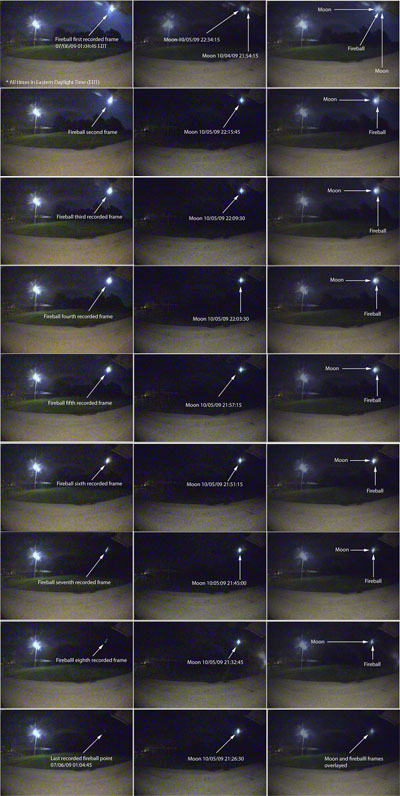 In an effort refine or confirm the current meteor trajectory I have been doing a lot of work to improve the altitude and azimuth readings from the collected videos. A couple of meteor experts suggested taking calibrated stellar photos of the direct video sightings. A calibrated stellar photo is a picture or video that contains visible stars or celestial objects taken with the same camera in the same location. The frames from the meteor video can then be layered over the calibrated photo and precise azimuth and altitude readings can be determined. Using known reference points in the calibrated photo you can get reference points to the unknown object in the original photo.
In an effort refine or confirm the current meteor trajectory I have been doing a lot of work to improve the altitude and azimuth readings from the collected videos. A couple of meteor experts suggested taking calibrated stellar photos of the direct video sightings. A calibrated stellar photo is a picture or video that contains visible stars or celestial objects taken with the same camera in the same location. The frames from the meteor video can then be layered over the calibrated photo and precise azimuth and altitude readings can be determined. Using known reference points in the calibrated photo you can get reference points to the unknown object in the original photo.
I contacted the York Water Company and asked if we could shoot some video from the fish eye camera that recorded the meteor on July 6th. Based on the distortion and power of the camera I thought grabbing stars was going to be hard. A friend of mine was checking the star charts and let me know that the full moon would be rising in the east on October 4th and October 5th. York’s camera faces east and I agreed this would be our best chance for calibrating the photo. By recording the moon rising on two different nights we would be able to obtain dozens of reference points throughout the night. The videos turned out perfectly and I have been able to do exactly what I wanted.
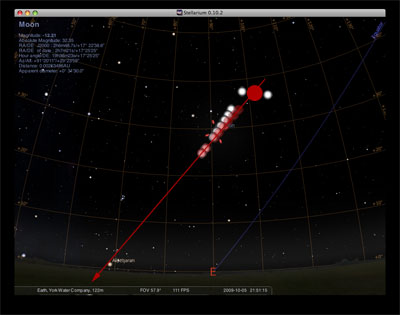 There are a total of nine frames from the original meteor video. I was able to layer these frames over the moon pictures and in three cases I got perfect matches. The meteor is exactly in the same position as the moon at different points of time. The rest of the frames partially overlay or come very close to moon pictures. I have been able to get a much more precise reading of the altitude and azimuth from the York video using this new calibrated photo. When I trace the meteor path to the horizon in the star maps I come up with a 67 degree angle. If I draw a line NE at 67 degrees in Google Earth from the York Water pumping station it intersects with Rob Matson’s 0km impact point almost perfectly (Rob’s point is actually 67.5 degrees NE from York Water). It is my understanding Rob did not use the York Water video in his original 3D model projection because we could not get a precise enough ALT-AZ reading from the camera due to the distortion caused by the fisheye lens. I interpret the analysis from this calibrated video as a confirmation of what Rob has already predicted. I find it pretty amazing how close this new angle comes to Rob’s original projection considering Rob only used the Pittsburgh video and my astro photo as input for his calculations.
There are a total of nine frames from the original meteor video. I was able to layer these frames over the moon pictures and in three cases I got perfect matches. The meteor is exactly in the same position as the moon at different points of time. The rest of the frames partially overlay or come very close to moon pictures. I have been able to get a much more precise reading of the altitude and azimuth from the York video using this new calibrated photo. When I trace the meteor path to the horizon in the star maps I come up with a 67 degree angle. If I draw a line NE at 67 degrees in Google Earth from the York Water pumping station it intersects with Rob Matson’s 0km impact point almost perfectly (Rob’s point is actually 67.5 degrees NE from York Water). It is my understanding Rob did not use the York Water video in his original 3D model projection because we could not get a precise enough ALT-AZ reading from the camera due to the distortion caused by the fisheye lens. I interpret the analysis from this calibrated video as a confirmation of what Rob has already predicted. I find it pretty amazing how close this new angle comes to Rob’s original projection considering Rob only used the Pittsburgh video and my astro photo as input for his calculations.
Newly Acquired Meteor Video
by Mike Hankey, under Mason Dixon Meteor
This video shows a shadow that is cast from a flag pole caught in the light of the Mason Dixon Meteor on July 6th 2009. This is certainly the best shadow video we have acquired yet. The tall flag pole casts a long shadow and mutliple frames of movement were captured. If you would like to know more information about this video or watch the high res version please email me at mike.hankey [at] gmail.com.
I Love NY
by Mike Hankey, under Mason Dixon Meteor
My wife had her 40th birthday this weekend. We threw her a big party and then I took her to New York City for a few days to catch a show and look at some meteorites…
Andromeda Calling – Comic
by Mike Hankey, under Mason Dixon Meteor
I got this in an email from a random internet user named kirk2012. Kirk this is hilarious, thanks so much for taking the time to make this.
Best Meteor-Wrong Yet
by Mike Hankey, under Mason Dixon Meteor
As I reported a few days ago a farmer in Lancaster contacted me about some strange rocks he found on his farm. I went out to see the rocks and they were definitely strange and a little meteoric. My initial thoughts were the rocks were probably some sort of slag, but it was not a type of slag I recognized. When I encounter suspicious rocks I photograph them and send the pictures out to people that are more knowledgeable about meteorites than I am.
The next day I sent the pics out to the meteorite list and within 10 minutes I got 20 emails back that in effect said… “that looks like a meteorite / that could be a meteorite.” The members gave me suggestions on a few tests I could run that would help confirm if it was in fact a meteorite. The tests included a bulk density test, a window test and a nickle test. Several members suggested to ‘cut that sucker open’.
On site I did the bulk density test and the window test. Three of the rocks passed the bulk density test so this was a very positive sign. For the window test, using an electric sander we shaved away part of the rocks exterior so we could look inside. The window revealed small metal flakes that looked like chrondules. Unfortunately we also saw some vesicles (small holes/ air bubbles inside the stone.)At the time we did the tests it was dark and I thought the holes could have been caused by the sander.
When I got the rock home I took some pictures of the window and emailed them out to some meteorite experts. They quickly responded and told me holes = slag… no meteorite.
This was kind of a bummer, but a great learning experience. I was able to learn and execute two new field tests that I can use to help identify meteorites. I was also very happy that the farmer found these rocks and called me about them. Gideon, I’m sorry it doesn’t look like these are meteorites, but they are defineately the best meteor-wrongs I’ve found so far in this adventure. Thank you very much for finding them and calling me about them.
For learning purposes and to be extra sure I wanted to follow through with the two other tests. I ordered a nickle test online, but haven’t gotten it yet. I drove out to Haggerstown MD to Derik Bower’s house. Derik has a diamond bladed rock saw and offered to slice the rock for me. When I showed Derik the rock he laughed and said, “that really looks like a meteorite”. We cut up the rock and inside we could see air bubbles that essentially confirmed this is a meteor-wrong. If it weren’t for the bubbles it looks a little like this black meteorite slice. This rock has a lot of meteoric attributes inside and out, but the one thing that categorically rules out meteorite is air bubbles inside the rock.
The new tests to identify a meteorite I learned from this rock are:
– bulk density test
– tile test (scrape the rock on the backside of a bathroom tile. A real meteorite should not leave a mark)
– window test (shave off a small piece of the exterior and look inside)
– slice test (use a rock saw to cut off a slice of the rock)
– nickle test (google nickle allergy test, buy one, follow instructions. All meteorites should test positive.)
Post Cards In The Mail
by Mike Hankey, under Mason Dixon Meteor
Here’s what 2000 postcards look like. Makes you wonder, if spammers printed a postcard for each piece of spam they sent how much room that would take up.
The post cards hit the mail Thursday. We should hopefully start getting some new leads in soon.
